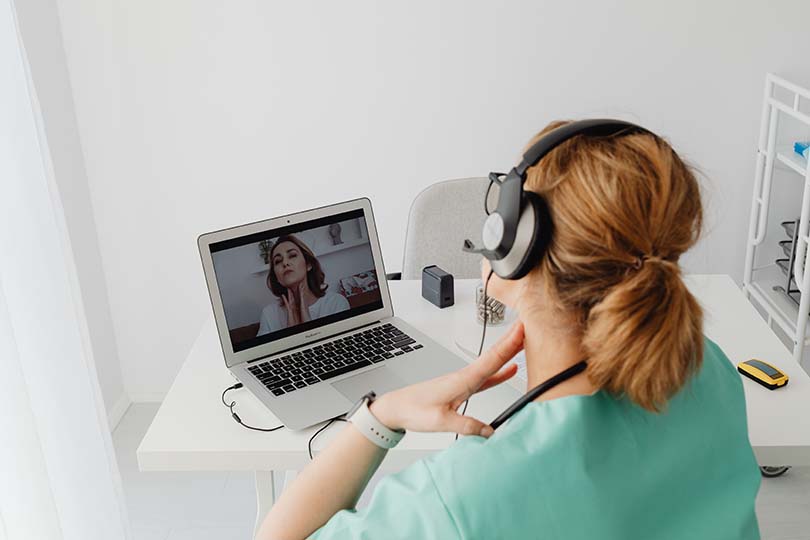
Health and UX: when design has a life-saving potential
November 10, 2022When a decimal point of a glucose meter is not noticeable enough, people with insulin-dependent diabetes might misread their glucose levels and end up getting the wrong insulin dose.
To prevent alarm fatigue, doctors often choose to turn audible alarms down or off of monitoring devices, relying on the visual indication when there’s a critical situation. This wouldn’t be a problem if the ‘warning’ message is attention grabbing. That’s not the case of the device below, where the ‘Warning!’ is lost in an interface with too much information and poor color contrast.
These examples show us how poorly-designed interfaces can lead to terrible outcomes, from severe hypoglycemia to diabetic coma or even death in the first case, or delay in assisting a patient in a critical situation in the second.
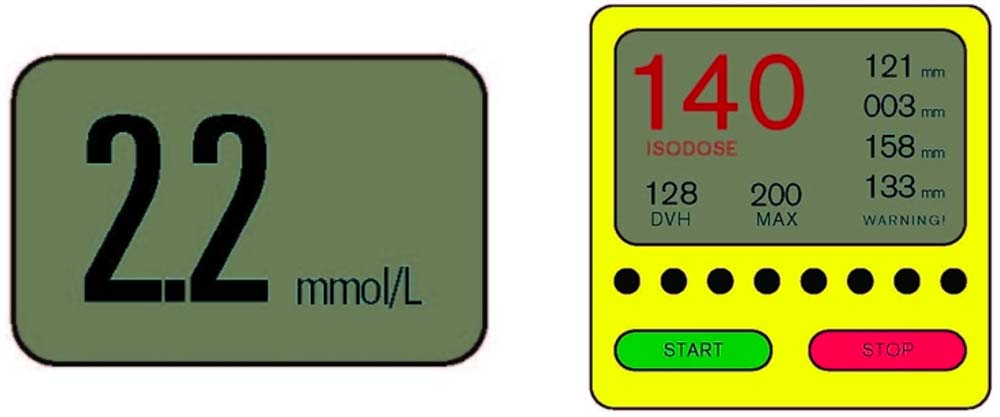
Examples found in “Total Recall: The Consequence of Ignoring Medical Device Usability” by Shannon E. Clark and Ed Israelski
In fact, these are only two examples of the many medical devices the Food and Drug Administration (FDA) has recalled due to poor usability and user interface design. The FDA has actually published a guidance document dedicated to applying human factors and usability engineering to medical devices. It recommends that manufacturers follow human factors or usability engineering processes during the development of new medical devices, focusing specifically on the user interface, where the user interface includes all points of interaction between the product and the user, including elements such as displays, controls, packaging, product labels, instructions for use, etc.
When medical devices are not designed with usability in mind there’s a higher change they’ll be unsafe, difficult to use, inefficient, and lead to human error and patient harm.
What’s Healthcare UX and why is it important?
Designed healthcare technology and services range from Electronic Health Records, fitness and nutrition apps, ambulances, ultrasound scanners, monitoring devices, wheelchairs, and so on. Their users can be healthcare professionals, specific patient groups, or pretty much anyone.
Over the past few years we’ve witnessed how industries have become more dependent on mobile apps and software platforms. The healthcare industry is no exception. Patients are using their smartphones for health advice, video call appointments, prescriptions, and to track their health. Medical professionals are using software to cope with patients records, prescriptions and medical reference.
The COVID-19 pandemic played an important role in the market of digital health apps. With care moving outside the doctor’s office and hospitals, both patients and providers were pushed to adopt health tools. Telehealth, exercise, mental health and blood pressure apps witnessed a significant increase of downloads.
Last year, over 350.000 digital health apps were available to consumers. Most of them focus on wellness, but there’s also been a rise in digital therapeutics (DTx) apps.
A good experience with healthcare technology and services, that is both useful, accessible and reliable, can make a huge different in improving peoples’ well-being, as well as the work of healthcare professionals.

Photo by wavebreakmedia_micro from Freepik
Challenges of designing for healthcare
Giving its uniqueness, specially the fact that one way or the other it involves people well-being and healthcare, designing for healthcare implies more specific challenges.
Data security threats
The healthcare industry handles large amounts of sensitive information. All patients’ records (personal details, tests, diagnoses) must be protected from any data leak or misuse. Designing a product for the healthcare industry means dealing with regulations that impact usability, design, implementation and data.
Bureaucracy and regulations overload
More than any other, healthcare is a delicate area. Multiple regulations and guidelines, that might even vary from country to country, are a challenge to design user-centric products and to scale them. There’s a constant need to understand limitations and how to approach them.
Growing senior population
Just like hospitals are designed with ramps to make access easier for people on a wheelchair or using crutches, so the design of healthcare platforms and apps must consider accessibility.
According to the World Health Organization (WHO), by 2030, 1 in 6 people in the world will be aged 60 years or over. This reminds us of the importance of building health products and services that accommodate the needs of a wide range of users, regardless of their abilities. Not to mention the millions of users who live with visual, auditory, speech, motor, or cognitive impairments. An accessible and inclusive experience becomes imperative. This includes taking into consideration things like colour contrast, text size and building a simple, easy-to-use navigation.
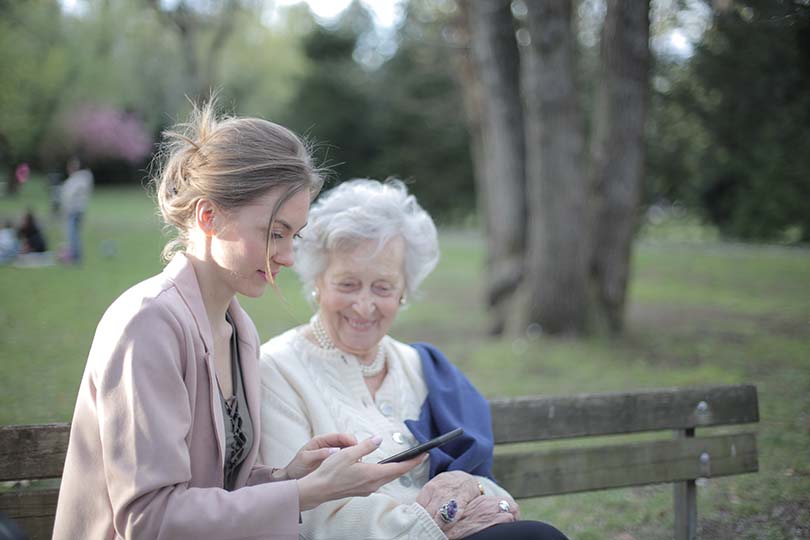
Photo by Andrea Piacquadio from Pexels
Doctors are hard to recruit
Healthcare professionals are not exactly the ones with the more light schedule, making it a user group harder to recruit for interviews or usability testing. Also, since they’re highly paid professionals, they tend to be more protective of their free time. The key is to make them understand the software or app addresses a specific problem, and how both they and their patients can benefit from the solution.
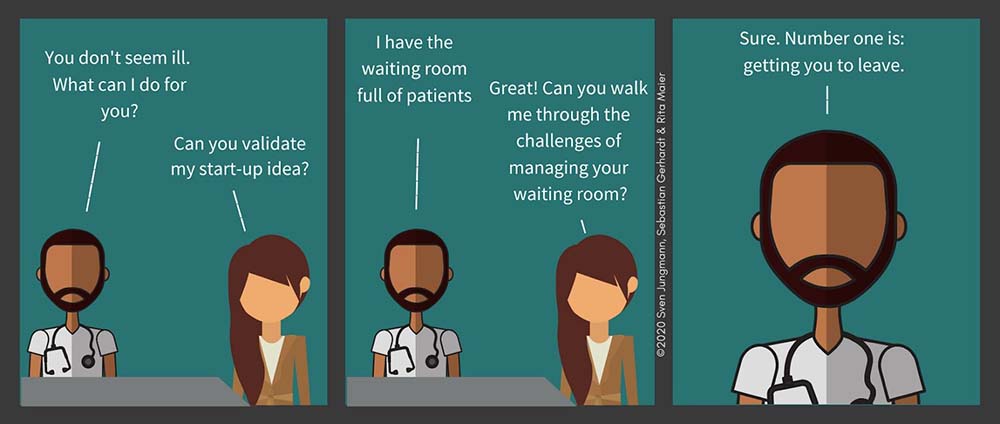
Source: “Getting Access to Doctors for User Research” in UXPA Magazine
Healthcare apps and services
In 2022, the theme of the World Usability Day is “Our Health” and looks to “explore systems that provide healthcare in all its many forms, such as telehealth, electronic health records, healthcare products and other digital health related solutions.”
With that in mind and wishing to discover more about care solutions, we’ve been searching and selected a few apps and services that are actively changing patients and providers lives.
Telehealth
Telehealth allows you to connect with your doctor online, getting the healthcare you need without leaving the comfort and safety of your home. As the pandemic reduced in-person visits, people turned to this solution that would keep them from going to the hospital. By April 2020, over 43% of Medicare primary care visits were conducted via telehealth services.
Knok is a fully integrated telemedicine solution that offers a series of features to monitor patients’ health and act preventively. It includes an AI symptom checker, video consultation with an embedded reading of vital signs and clinical surveys to monitor patients’ health.
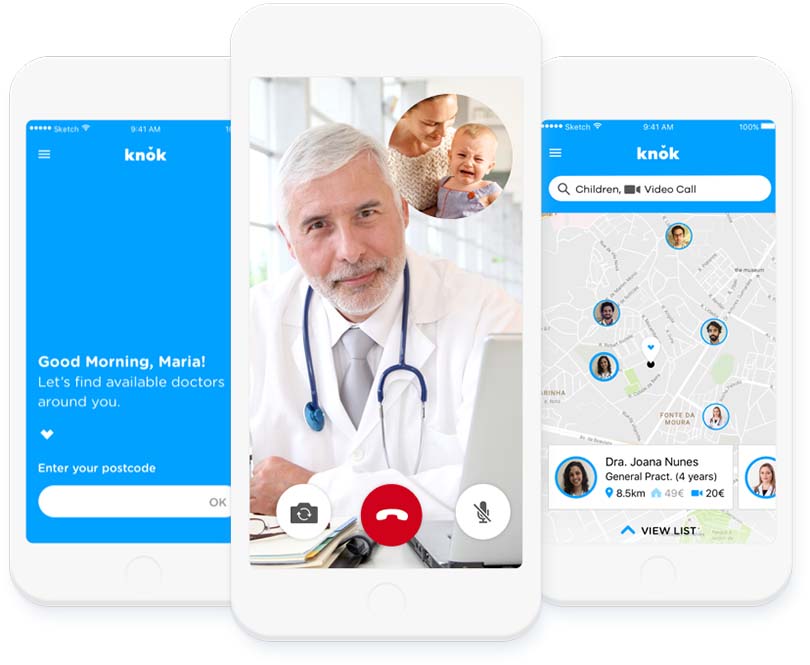
Image credit: Knot
EyeCare Live is an online platform that eliminates the need to visit an ophthalmologist in-person. Instead, you can have an online appointment to renew prescriptions for glasses or contact lenses, discuss your dry eye or any other eye issues.
First, you are connected to a doctor where you are asked to record your condition through pictures or videos of affected eyes. Within minutes, your doctor is able to see you through high-definition video to better understand and help resolve your condition.
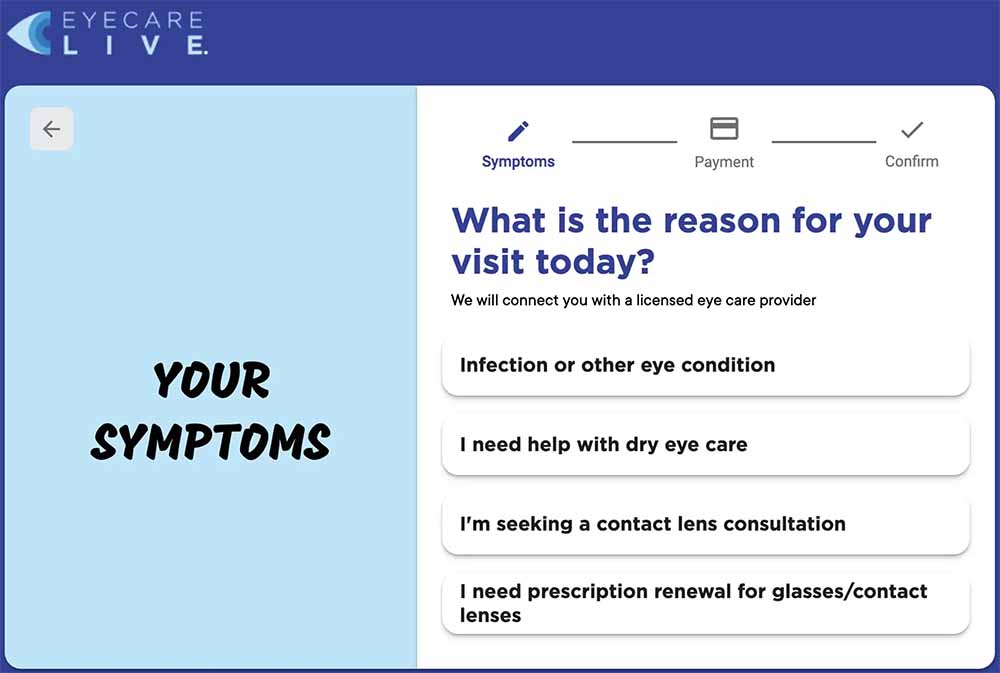
Image credit: EyeCare Live
Healthcare products
Smart inhalers: The smart inhaler integrates connectivity with a mobile app, via Bluetooth. They are built with sensor technology that records data about the time, date of use, and the patient’s location at each use. They can help remind patients to use the inhaler at the right time, and send an alert if the they forgot to take the device with them.
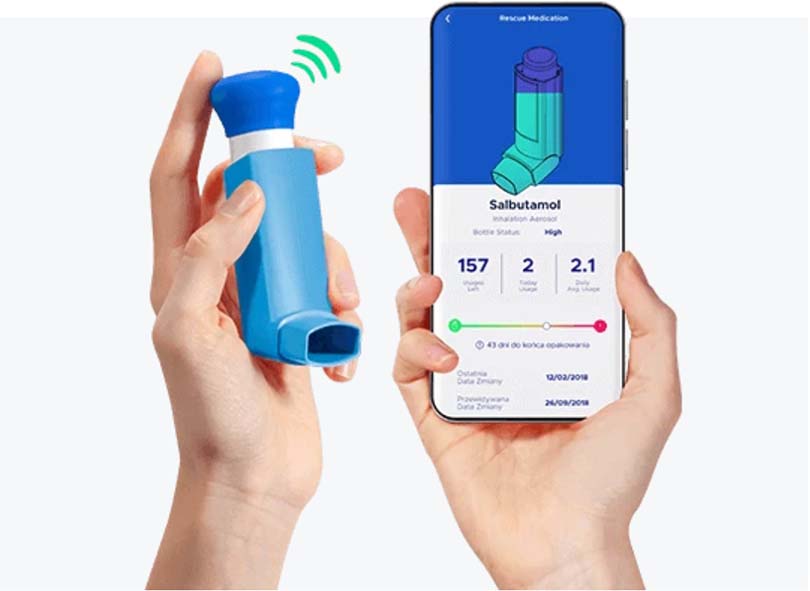
FindAir smart inhaler and asthma diary app for digital asthma care
Continuous Glucose Monitoring: For people with Type 1 or Type 2 diabetes, monitoring blood glucose levels is a necessary part of their routine. Fortunately pricking their finger and checking their blood manually is a thing of the past. Using a continuous glucose monitor is now a far more convenient option.
As an example, Dexcom consists of a small, wearable sensor which includes a transmitter that sends your glucose numbers to a smart device or receiver every 5 minutes. It includes features like alerts for potential severe hypoglycemic event, data sharing and also offers an integrated system for diabetes data reporting and management.
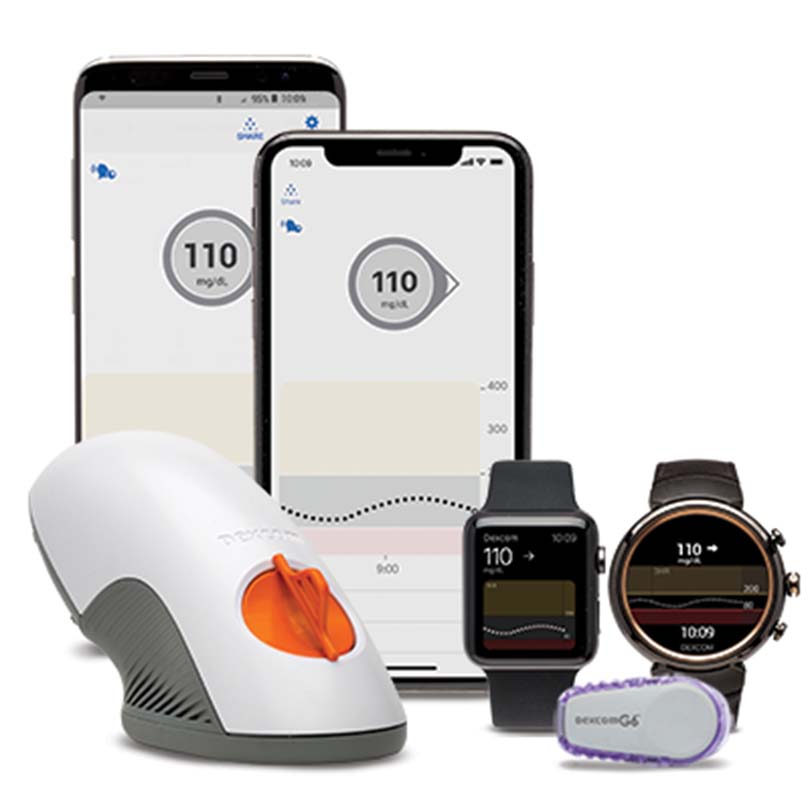
Image credit: Dexcom
MDacne is a fully customisable acne treatment. It all starts with something as simple as taking a selfie. Then, in a few seconds, the app analyses your skin and creates a personalised treatment kit with products formulated to achieve your skincare goals. Additionally, it offers chat support with a dermatologist.
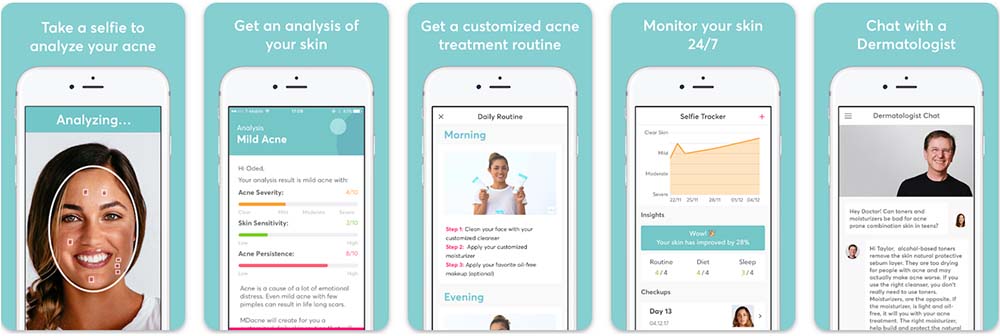
Image credit: Google Play
Systems for mental health, exercise and nutrition
Over the last few years more people are suffering from stress, anxiety and depression. Although mental health apps aren’t designed to diagnose these conditions or replace the care of a professional, they can be a good support to monitor and manage your mental health.
Headspace is a meditation app designed to help people live more mindfully. Through science-backed meditation and mindfulness tools, it can help with stress relief, improve focus, and to get better sleep.
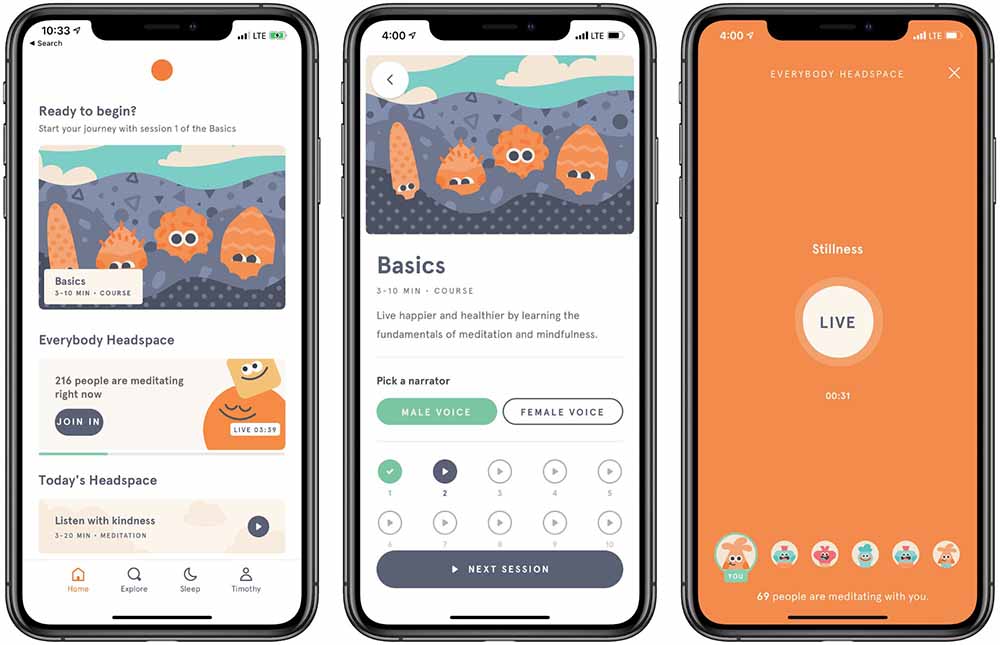
Image credit: TidBITS
BetterMe is a health and fitness platform that encourages healthy mental and physical lifestyle changes in accessible ways. It focuses on personalised solutions to master healthy habits. BetterMe includes a glossary of nutricional values for common foods, a water tracker and a sleep tracker.
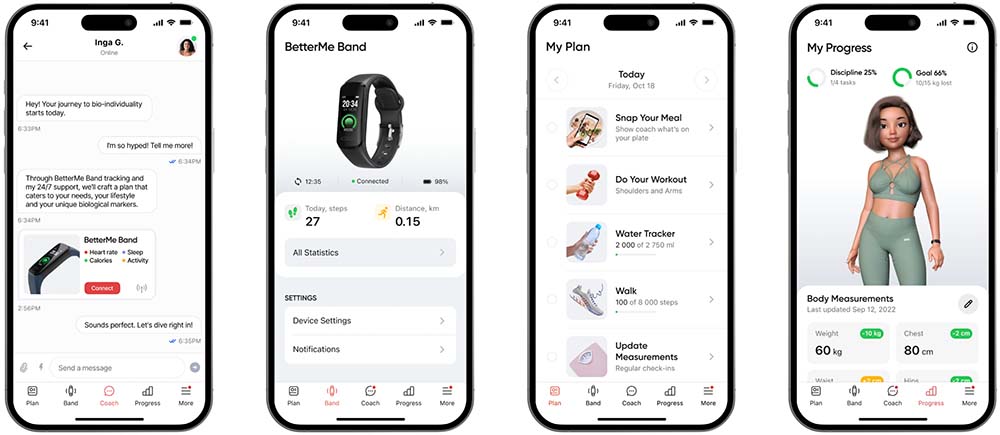
Image credit: BetterMe
MyPlate Calorie Counter is an app that tracks your calories intake and where you can log your workouts, while also offering meal plans and recipes.
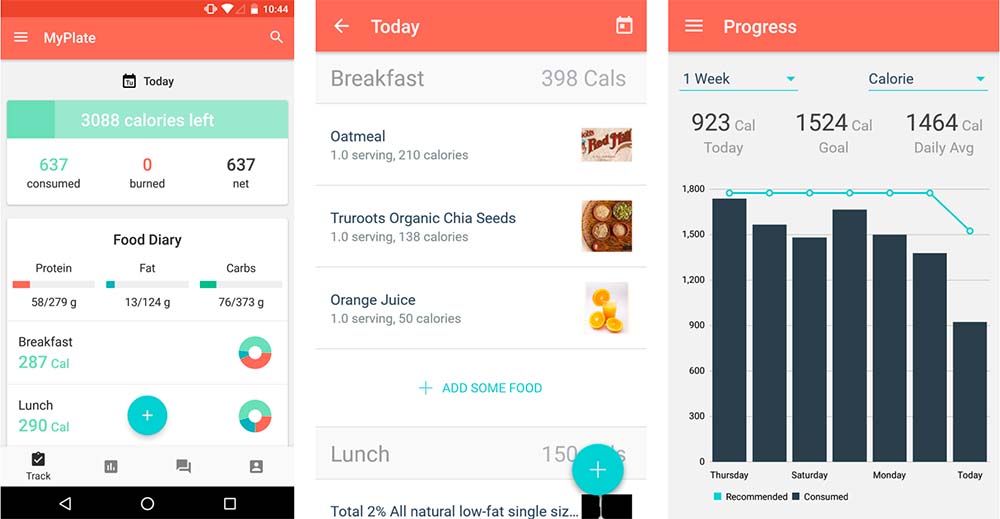
Image credit: Google Play
DTx products
DTx (short for digital therapeutics) products deliver to patients evidence-based therapeutic interventions that are driven by high quality software programs to treat, manage, or prevent a disease or disorder. These products can normally be accessed through mobile devices, and be used independently or in concert with other treatments.
Daylight is a digital therapeutic for managing anxiety. It’s based on proven cognitive behavioural therapy and developed by clinical psychologists and researchers. By spending just 10 minutes per day with Daylight’s structured, responsive program, you could see improvements within a few weeks. In trials, 71% of participants recovered from clinical levels of anxiety in 10 weeks.
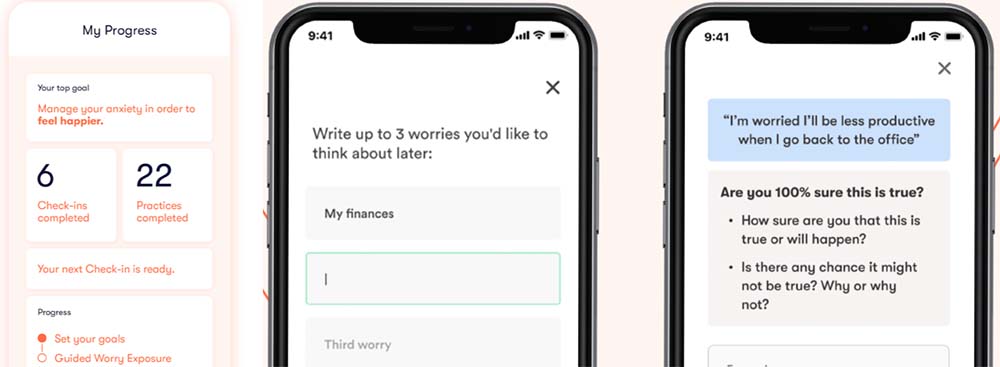
Image credit: Big Health website
HelloBetter Chronic Pain is a digital therapeutic program for chronic pain patients wishing to overcome their pain. It is a 12-week program where patients will acquire effective strategies for dealing with chronic pain: learn how to change the way that pain affects them through acceptance, discover what’s truly important to their in life and how they can apply this knowledge to reshape their everyday life.
The course has been scientifically assessed and proven to have a positive effect on the impacts of pain. So far it is only available in German.
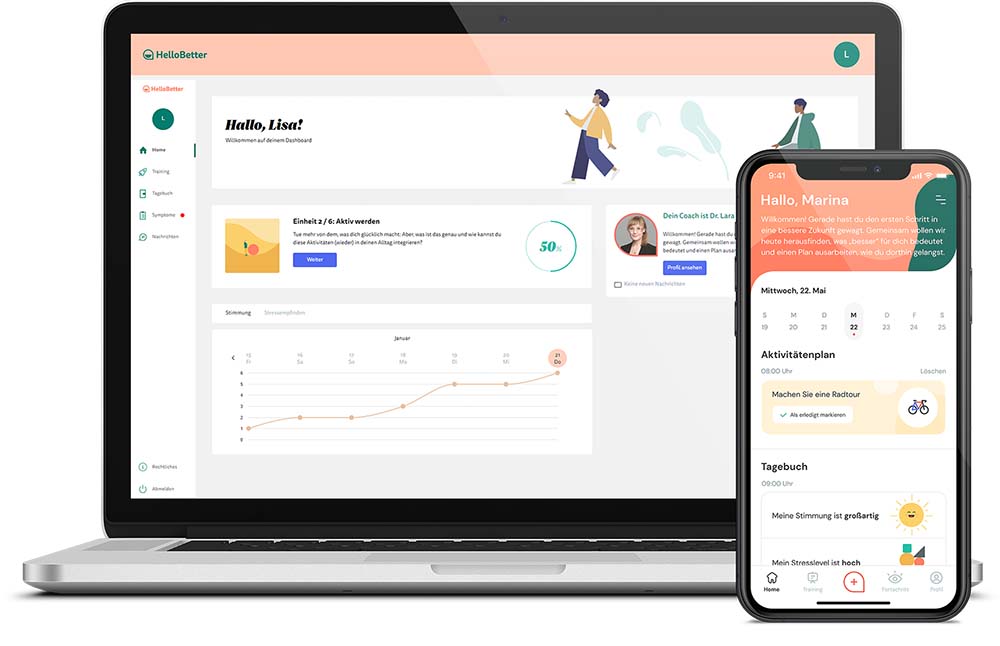
Image credit: HelloBetter Chronic Pain website
vorvida® is an online program that can be accessed 24/7 on any device. It uses artificial intelligence to interact with you like a live therapist, asking you questions and analysing your responses to provide customised feedback and strategies to help you manage your drinking behaviours. One interesting aspect is that it was designed to prioritise users privacy.
A clinical trial proved that vorvida® helped the participants drink less in as little as 3 months.

Image credit: vorvida
Reminder apps
MyTherapy is a personal pill reminder and medication tracker app. You can also set reminders for measurements and activities such as check weight, blood pressure, heart rate or schedule activities like running or yoga. It also allows you to set up a symptom check where you can enter how you’re feeling and record symptoms such as racing heartbeat or chest pain.

Image credit: MyTherapy
Electronic health records (EMR)
Instead of a pile of physical files, patient data can now be stored in a single place. This way both patients and multiple doctors can access lab results, medical information, at anytime.
FreddieMed is an EMR solution that helps medical clinics streamline processes related to billing, data security, document management, patient communication, and more on a centralised platform. Doctors are able to schedule appointments, send reminder emails, conduct video consultations, send prescriptions, create consultation notes, and collaborate with team members on cases.
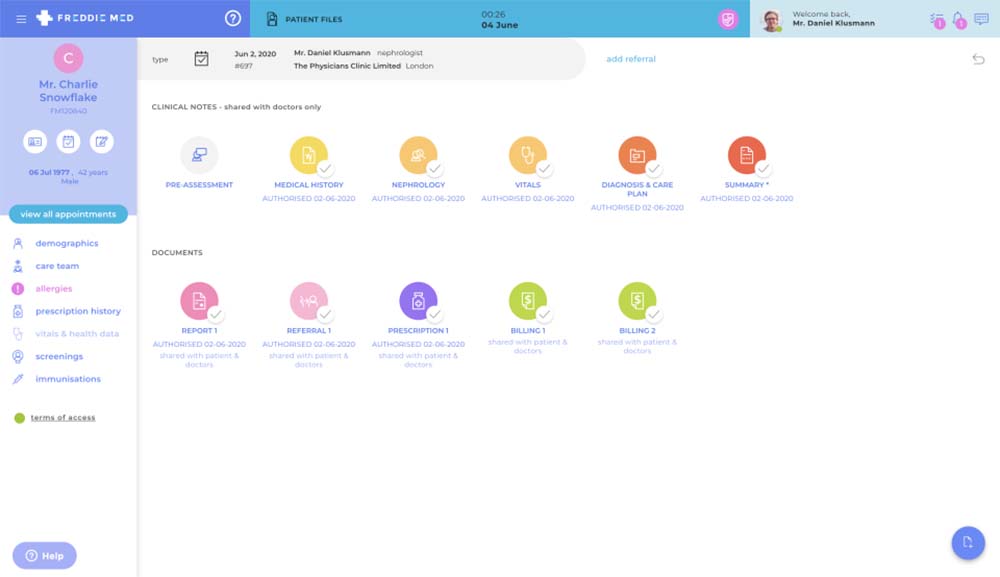
Image credit: Software Advice
WebMD is an healthcare app that comprises multiple functionalities. You can check your symptoms, set medication reminders, get alerts when allergens are high, access in-depth drug information, discover treatments for a specific conditions and find doctors and make appointments.
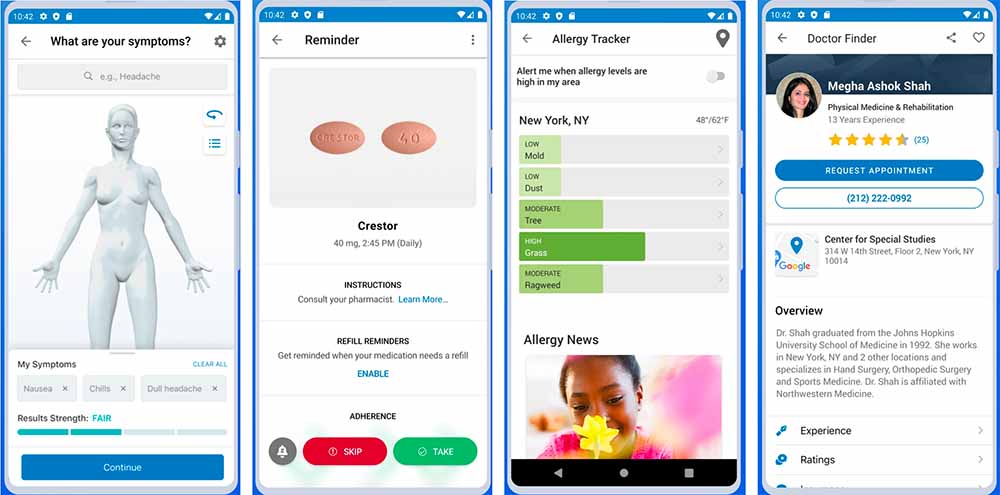
Image credit: Google Play
Shaping the future of healthcare
While more patients have preference for digital healthcare and telehealth, most healthcare professionals are already using health apps at work for accessing electronic health records, communicating with their colleagues, medical references, or simply managing their schedule.
With the rapid growth of the healthcare digital market, there are plenty of opportunities for innovation regarding the user experience in healthcare. Web solutions need to meet the needs of healthcare professionals, patients, and businesses, while being comprehensive and accessible. UX can help make lives easier for patients, doctors, nurses, care givers, and ultimately save lives.
Looking for a partner for healthcare UX?
As a UX consultancy, we’ve been involved in a few projects in the healthcare field for major brands like Lilly, Bayer, LifeExtension and Atida Mifarma.
Being aware that the design of healthcare products comes with greater responsibility, we strive to build products and services with the user in mind, be that patients or healthcare providers. For that we strongly rely on research and usability testing, assuring we’re meeting users’ needs and guaranteeing a great user adoption.
Tell me moreRelated Articles
-
Digital Accessibility Strategy Course [starts in January 2025]
The new Digital Accessibility Strategy course aims to equip participants with the essential skills to understand the digital accessibility landscape.
-
Looking to be EAA compliant? — Don’t fall for easy web accessibility solutions
Choosing an overlay is just a band-aid solution, and shows a true disregard for users with disabilities. Instead, we need to work towards a mentality where websites, apps and other digital products are designed and coded with accessibility in mind from day 1.
-
Prompt-based — The birth of a new human-machine interaction model
The ways humans interact with technology has evolved significantly over the decades — and it’s still constantly evolving. The rise of Artificial Intelligence (AI) and natural language processing (NPL) has brought to light a new way of interaction — prompts.
-
A glimpse into the future — Here’s the UX design trends we expect to dominate 2024
Emerging technologies and tools constantly influence the way people use the Internet and interact with digital products. And as user behaviours and preferences evolve, designers must keep up with new tools and solutions to deliver interfaces and user experiences that cater the needs of an ever-demanding audience.
-
How can insurance companies make their digital products more accessible?
Millions of people who live with a disability struggle to access important information online because websites and apps are built with major content and technological barriers. And insurance websites are not an exception.
-
Barrier-free banking - From branches to mobile apps accessible for all
In the banking and financial industry, accessibility is about empowering everyone, including people with disabilities and the elderly, to enjoy bank's products, services and facilities, by making them convenient and easy to use.
-
Design for a better world - How working together and applying design approaches is improving people's lives
9 November is World Usability Day 2023. This year's theme is Collaboration and Cooperation, which intents to focus on how we can work together to create solutions, both globally and locally, to solve the world's biggest problems.
-
Be an Agent of Change - Check these resources to help you build more ethical designs
The role of today's designer goes far beyond simply creating beautiful interfaces and experiences. You can no longer design without considering the consequences of how what you're creating impacts individuals, society and the world.
-
E-commerce and Accessibility - Creating an inclusive online shopping experience
Now it’s the time for online stores to improve their website accessibility and ensure they offer an inclusive experience for everyone.
-
The future is today — How can we leverage AI to improve our UX Design work
AI has now become a big part of several areas of our lives, and UX Design is no exception. It’s actually becoming more and more applicable to the UX design process.
-
Conducting usability testing with people with disabilities
Drawing on our experience conducting usability tests with users with disabilities, we’re sharing a few things to take into account when planning and conducting research with people with disabilities and make sure everything goes smoothly and you can collect valuable insights.
-
Accessibility Compliance App - by Xperienz. A useful tool when fixing accessibility errors
To simplify the presentation of the accessibility evaluation of websites, Xperienz has created the Accessibility Compliance App. We start by doing a content inventory in which we collect all the pages of the site. Then we evaluate each page and list all the aspects that need to be fixed.
-
What does the UX future hold? - Here's the UX Design trends we expect to dominate 2023
Businesses must stay up to date on emerging user experience and interface trends so we've selected 7 top trends that are already making, and will certainly continue to make, an impact on website and app development.
-
Raising Awareness for Web Accessibility [Infographic] — International Day of Persons with Disabilities
Last December 3 we celebrated the International Day of Persons with Disabilities. To help promote a more accessible Web we’ve put together an easy-to-digest infographic about Web Accessibility.
-
Why hiring external UX services even when you have an in-house UX team?
Even if you have an in-house UX design team, there might be times when additional resources and professional know-how can be useful. Bringing in an external UX team might be exactly what you need for your company to excel in all projects.
-
Health and UX: when design has a life-saving potential
A good experience with healthcare technology and services, that is both useful, accessible and reliable, can make a huge different in improving peoples’ well-being, as well as the work of healthcare professionals.
-
Trust — Breaking or Building it Through Design
Trust is more valuable now than ever. 68% say trusting a brand they buy or use is more important today than in the past (Edelman, 2019). We live in an ever-growing digitalised world, where we increasingly interact and transact online. At the same time we constantly crave for trust-based interactions in digital environments. Questions like "Will the personal data I provide here be misused?", " Will my email be used to spam me incessantly?" or "Do I really want to share my bank details to a website I've never heard about?" have certainly come to our mind more than once.
-
Creating accessible digital experiences
Accessibility is of major importance for organisations who deliver web products and tools. Accessibility issues can affect not only a website’s usability for people who have disabilities but also for those who don’t. By offering accessible products, organisations will show they are inclusive, reach a wider market, be legally compliant, and offer a better user experience. For everyone.
-
"You're on Mute" - Lessons Learned After a Year of Conducting Remote User Research
After more than one year of engaging with users remotely, we want to reflect on the pitfalls of remote user research, share some of the lessons we learned and reflect on what’s going to be “the next normal” after Covid’s impact.
-
Quick & Dirty User Research
Tight timescales and budgets are no excuses to ditch user research altogether, specially when we all know it’s essential to make sure you deliver easy-to-use products. Quick and dirty research is a great way to get user insights fast and on a budget.
-
How bad metrics are hurting your business and your users’ experience
Businesses are deceiving themselves and annoying their customers as a consequence. They do so when they apply biased surveys only expecting to confirm what they want to hear.
-
UX Writing — Create better experiences with better content
Imagine a website or an app with no words. If it wasn’t for the logo, would you be able tell what this page is about? Would you know which button to click? Where navigation would take you? What you’re supposed to write in the search bar? No matter how good-looking an interface is, without words users will simply not be able to accomplish any tasks in it.
-
10 Bad User Research Practices You Will Want to Avoid
Some might think user research is as simple as watching people perform a few tasks on a website or asking them a few questions, but user research is definitely not walk in the park. Let’s go through some of the mistakes that can arise when planning and conducting research.
-
Responsive Illustrations
Can the same illustration be used the same way on a desktop screen, on a tablet or on a smartphone? How is it possible to make them look great on every screen without losing quality or the idea the brand is trying to convey?
-
UXLx Masters — Wrap-up
From 10 to 13 February attendees from 25 countries and 14 world-renowned UX experts joined online for 3 days of learning. The programme included 12 live masterclasses, 2 keynotes, 2 live podcasts, and more.
-
The Design Role in Digital Transformation
As the world keeps evolving and digital becomes more crucial to our everyday life, companies are feeling pressured to keep up and level up their game.
-
Remote UX Research — our selection of the best online tools to conduct it
As a company that focus on UX research and design, we gathered some of the best tools to conduct remote research and combined them, with our personal knowledge, in this article.
-
Why We Need Parametric UI Design Tools
In Design, parametric refers to a process based on algorithmic thinking that uses parameters and their interrelations to define a geometric form (which can be buttons, containers, panels, etc.).
-
Health Habits during the Lockdown
Xperienz, along with 15 other agencies from the global network of user research companies UX Fellows, conducted an intercultural study in 15 different countries about health and wellbeing during the lockdown caused by the current pandemic situation.

